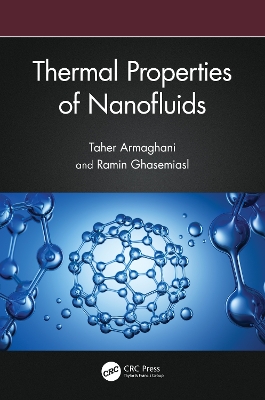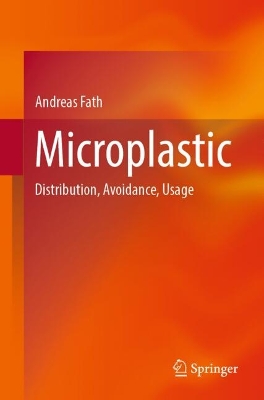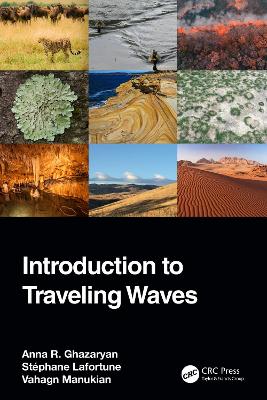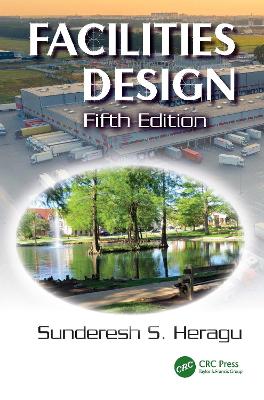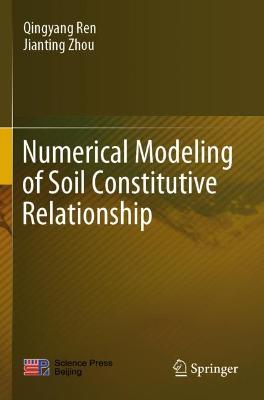Handbook of Peridynamic Modeling
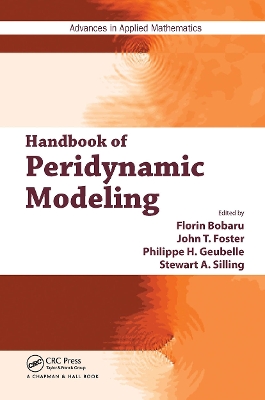 portes grátis
portes grátis
Handbook of Peridynamic Modeling
Silling, Stewart A.; Geubelle, Philippe H; Bobaru, Florin; Foster, John T.
Taylor & Francis Ltd
10/2024
586
Mole
9781032918792
15 a 20 dias
Descrição não disponível.
I The Need for Nonlocal Modeling and Introduction to Peridynamics
Why Peridynamics?
The mixed blessing of locality
Origins of nonlocality in a model
Long-range forces
Coarsening a fine-scale material system
Smoothing of a heterogeneous material system
Nonlocality at the macroscale
The mixed blessing of nonlocality
Introduction to Peridynamics
Equilibrium in terms of integral equations
Material modeling
Bond based materials
Relation between bond densities and flux
Peridynamic states
Ordinary state based materials
Correspondence materials
Discrete particles as peridynamic bodies
Setting the horizon
Linearized peridynamics
Plasticity
Bond based microplastic material
LPS material with plasticity
Damage and fracture
Damage in bond based models
Damage in ordinary state based material models
Damage in correspondence material models
Nucleation strain
Treatment of boundaries and interfaces
Bond based materials
State based materials
Emu numerical method
2.7 Conclusions
II Mathematics, Numerics, and Software Tools of Peridynamics
Nonlocal Calculus of Variations and Well-posedness of Peridynamics
Introduction .
A brief review of well-posedness results
Nonlocal balance laws and nonlocal vector calculus
Nonlocal calculus of variations - an illustration
Nonlocal calculus of variations - further discussions
Summary
Local limits and asymptotically compatible discretizations
Introduction
Local PDE limits of linear peridynamic models
Discretization schemes and discrete local limits
Asymptotically compatible schemes for peridynamics
Summary
Roadmap for Software Implementation
Introduction
Evaluating the internal force density
Bond damage and failure
The tangent stiffness matrix
Modeling contact
Meshfree discretizations for peridynamics
Proximity search for identification of pairwise interactions
Time integration
Explicit time integration for transient dynamics
Estimating the maximum stable time step
Implicit time integration for quasi-statics
Example simulations
Fragmentation of a brittle disk resulting from impact
Quasi-static simulation of a tensile test
Summary
III Material Models and Links to Atomistic Models
Constitutive Modeling in Peridynamics
Introduction
Kinematics, momentum conservation, and terminology
Linear peridynamic isotropic solid
Plane elasticity
Plane stress
Plane strain
"Bond-based" theories as a special case
On the role of the influence function
Finite Deformations
Invariants of peridynamic scalar-states
Correspondence models
Non-ordinary correspondence models for solid mechanics
Ordinary correspondence models for solid mechanics
Plasticity
Yield surface and flow rule
Loading/unloading and consistency
Non-ordinary models
A non-ordinary beam model
A non-ordinary plate/shell model
Other non-ordinary models
Final Comments
Links between Peridynamic and Atomistic Models
Introduction
Molecular dynamics
Meshfree discretization of peridynamic models
Upscaling molecular dynamics to peridynamics
A one-dimensional nonlocal linear springs model
A three-dimensional embedded-atom model
Computational speedup through upscaling
Concluding remarks
Absorbing Boundary Conditions with Verification
Introduction
A PML for State-based Peridynamics
Two-dimensional (2D), State-based Peridynamics Review
Auxiliary Field Formulation and PML Application
Numerical Examples
Verification of Cone and Center Crack Problems
Dimensional Analysis of Hertzian Cone Crack Development
in Brittle Elastic Solids
State-based Verification of a Cone Crack
Bond-based Verification of a Center Crack
Verification of an Axisymmetric Indentation Problem
Formulation
Analytical Verification
IV Modeling Material Failure and Damage
Dynamic brittle fracture as an upscaling of unstable mesoscopic dynamic
Introduction
The macroscopic evolution of brittle fracture as a small horizon limit
of mesoscopic dynamics
Dynamic instability and fracture initiation
Localization of dynamic instability in the small horizon-macroscopic limit
Free crack propagation in the small horizon-macroscopic limit
Summary
Crack Branching in Dynamic Brittle Fracture
Introduction
A brief review of literature on crack branching
Theoretical models and experimental results on dynamic
brittle fracture and crack branching
Computations of dynamic brittle fracture based on FEM
Dynamic brittle fracture results based on atomistic modeling
Dynamic brittle fracture based on particle and lattice-based methods
Phase-field models in dynamic fracture
Results on dynamic brittle fracture from peridynamic models
Brief Review of the bond-based Peridynamic model
An accurate and efficient quadrature scheme
Peridynamic results for dynamic fracture and crack branching
Crack branching in soda-lime glass
Load case 1: stress on boundaries
Load case 2: stress on pre-crack surfaces
Load case 3: velocity boundary conditions
Crack branching in Homalite
Load case 1: stress on boundaries
Load case 2: stress on pre-crack surfaces
Load case 3: velocity boundary conditions
Influence of sample geometry
10.5.3.1 Load case 1: stress on boundaries
Load case 2: stress on pre-crack surfaces
Load case 3: velocity boundary conditions
Discussion of crack branching results
Why do cracks branch?
The importance of nonlocal modeling in crack branching
Conclusions
Relations Between Peridynamic and Classical Cohesive Models
Introduction
Analytical PD-based normal cohesive law
Case 1 - No bonds have reached critical stretch
Case 2 - Bonds have exceeded the critical stretch
Numerical approximation of PD-based cohesive law
PD-based tangential cohesive law
Case 1 - No bonds have reached critical stretch
Case 2 - Bonds have exceeded the critical stretch
PD-based mixed-mode cohesive law
Conclusion
Peridynamic modeling of fiber-reinforced composites
Introduction
Peridynamic analysis of a lamina
Peridynamic analysis of a laminate
Numerical results
Conclusions
Appendix A: PD material constants of a lamina
Simple shear
Uniaxial stretch in the fiber direction
Uniaxial stretch in the transverse direction
Biaxial stretch
Appendix B: Surface correction factors for a composite lamina
Appendix C: PD interlayer and shear bond constants of a laminate
Peridynamic Modeling of Impact and Fragmentation
Introduction
Convergence studies and damage models that influence the damage
behavior
Damage-dependent critical bond strain
Critical bond strain dependence on compressive strains along
other directions
Surface effect in impact problems
Convergence study for impact on a glass plate
Impact on a multilayered glass system
Model description
A comparison between FEM and peridynamics for the elastic
response of a multilayered system to impact
13.4 Computational results for damage progression in the seven-layer
glass system
Damage evolution for the cross-section
Damage evolution in the first layer
Damage evolution in the second layer
Damage evolution in the fourth layer
Damage evolution in the seventh layer
Conclusions
V Multiphysics and Multiscale Modeling
Coupling Local and Nonlocal Models
Introduction
Energy-based blending schemes
The Arlequin method
Description of the coupling model
A numerical example
The morphing method
Overview
Description of the morphing method
One-dimensional analysis of ghost forces
Numerical examples
Force-based blending schemes
Convergence of peridynamic models to classical models
Derivation of force-based blending schemes
A numerical example
Summary
A Peridynamic model for corrosion damage
Abstract
Introduction
Electrochemical Kinetics
Problem formulation of 1D pitting corrosion
The peridynamic formulation for 1D pitting corrosion
Results and discussion of 1D pitting corrosion
Pit corrosion depth proportional to square root t
Activation-controlled, diffusion-controlled, and IR-controlled
corrosion
Corrosion damage and the Concentration-Dependent Damage
(CDD) model
Damage evolution
Saturated concentration
Formulation and results of 2D and 3D pitting corrosion
PD formulation of 2D and 3D pitting corrosion
The Concentration-Dependent Damage (CDD) model for
pitting corrosion: example in 2D
A coupled corrosion/damage model for pitting corrosion: 2D example
Diffusivity affects the corrosion rate
Pitting corrosion with the CDD+DDC model in 3D
Pitting corrosion in heterogeneous materials: examples in 2D
Pitting corrosion in layer structures
Pitting corrosion in a material with inclusions: a 2D example
Conclusions
Appendix
Convergence study for 1D diffusion-controlled corrosion
Convergence study for 2D activation-controlled corrosion
with Concentration-Dependent Damage model
Peridynamics for Coupled Field Equations
Introduction
Diffusion Equation
Thermal diffusion
Moisture diffusion
Electrical conduction
Coupled Field Equations
Thermomechanics
Thermal diffusion with a structural coupling term
Equation of motion with a thermal coupling term
Porelasticity
Mechanical deformation due to fluid pressure
Fluid flow in porous medium
Electromigration
Hygrothermomechanics
Numerical solution to peridynamic field equations
Correction of PD material parameters
Boundary conditions
Essential boundary conditions
Natural boundary conditions
Example 1
Example 2
Example 3
Applications
Coupled nonuniform heating and deformation
Coupled nonuniform moisture and deformation in a square plate
Coupled fluid pore pressure and deformation
Coupled electrical, temperature, deformation, and vacancy diffusion
Remarks
Why Peridynamics?
The mixed blessing of locality
Origins of nonlocality in a model
Long-range forces
Coarsening a fine-scale material system
Smoothing of a heterogeneous material system
Nonlocality at the macroscale
The mixed blessing of nonlocality
Introduction to Peridynamics
Equilibrium in terms of integral equations
Material modeling
Bond based materials
Relation between bond densities and flux
Peridynamic states
Ordinary state based materials
Correspondence materials
Discrete particles as peridynamic bodies
Setting the horizon
Linearized peridynamics
Plasticity
Bond based microplastic material
LPS material with plasticity
Damage and fracture
Damage in bond based models
Damage in ordinary state based material models
Damage in correspondence material models
Nucleation strain
Treatment of boundaries and interfaces
Bond based materials
State based materials
Emu numerical method
2.7 Conclusions
II Mathematics, Numerics, and Software Tools of Peridynamics
Nonlocal Calculus of Variations and Well-posedness of Peridynamics
Introduction .
A brief review of well-posedness results
Nonlocal balance laws and nonlocal vector calculus
Nonlocal calculus of variations - an illustration
Nonlocal calculus of variations - further discussions
Summary
Local limits and asymptotically compatible discretizations
Introduction
Local PDE limits of linear peridynamic models
Discretization schemes and discrete local limits
Asymptotically compatible schemes for peridynamics
Summary
Roadmap for Software Implementation
Introduction
Evaluating the internal force density
Bond damage and failure
The tangent stiffness matrix
Modeling contact
Meshfree discretizations for peridynamics
Proximity search for identification of pairwise interactions
Time integration
Explicit time integration for transient dynamics
Estimating the maximum stable time step
Implicit time integration for quasi-statics
Example simulations
Fragmentation of a brittle disk resulting from impact
Quasi-static simulation of a tensile test
Summary
III Material Models and Links to Atomistic Models
Constitutive Modeling in Peridynamics
Introduction
Kinematics, momentum conservation, and terminology
Linear peridynamic isotropic solid
Plane elasticity
Plane stress
Plane strain
"Bond-based" theories as a special case
On the role of the influence function
Finite Deformations
Invariants of peridynamic scalar-states
Correspondence models
Non-ordinary correspondence models for solid mechanics
Ordinary correspondence models for solid mechanics
Plasticity
Yield surface and flow rule
Loading/unloading and consistency
Non-ordinary models
A non-ordinary beam model
A non-ordinary plate/shell model
Other non-ordinary models
Final Comments
Links between Peridynamic and Atomistic Models
Introduction
Molecular dynamics
Meshfree discretization of peridynamic models
Upscaling molecular dynamics to peridynamics
A one-dimensional nonlocal linear springs model
A three-dimensional embedded-atom model
Computational speedup through upscaling
Concluding remarks
Absorbing Boundary Conditions with Verification
Introduction
A PML for State-based Peridynamics
Two-dimensional (2D), State-based Peridynamics Review
Auxiliary Field Formulation and PML Application
Numerical Examples
Verification of Cone and Center Crack Problems
Dimensional Analysis of Hertzian Cone Crack Development
in Brittle Elastic Solids
State-based Verification of a Cone Crack
Bond-based Verification of a Center Crack
Verification of an Axisymmetric Indentation Problem
Formulation
Analytical Verification
IV Modeling Material Failure and Damage
Dynamic brittle fracture as an upscaling of unstable mesoscopic dynamic
Introduction
The macroscopic evolution of brittle fracture as a small horizon limit
of mesoscopic dynamics
Dynamic instability and fracture initiation
Localization of dynamic instability in the small horizon-macroscopic limit
Free crack propagation in the small horizon-macroscopic limit
Summary
Crack Branching in Dynamic Brittle Fracture
Introduction
A brief review of literature on crack branching
Theoretical models and experimental results on dynamic
brittle fracture and crack branching
Computations of dynamic brittle fracture based on FEM
Dynamic brittle fracture results based on atomistic modeling
Dynamic brittle fracture based on particle and lattice-based methods
Phase-field models in dynamic fracture
Results on dynamic brittle fracture from peridynamic models
Brief Review of the bond-based Peridynamic model
An accurate and efficient quadrature scheme
Peridynamic results for dynamic fracture and crack branching
Crack branching in soda-lime glass
Load case 1: stress on boundaries
Load case 2: stress on pre-crack surfaces
Load case 3: velocity boundary conditions
Crack branching in Homalite
Load case 1: stress on boundaries
Load case 2: stress on pre-crack surfaces
Load case 3: velocity boundary conditions
Influence of sample geometry
10.5.3.1 Load case 1: stress on boundaries
Load case 2: stress on pre-crack surfaces
Load case 3: velocity boundary conditions
Discussion of crack branching results
Why do cracks branch?
The importance of nonlocal modeling in crack branching
Conclusions
Relations Between Peridynamic and Classical Cohesive Models
Introduction
Analytical PD-based normal cohesive law
Case 1 - No bonds have reached critical stretch
Case 2 - Bonds have exceeded the critical stretch
Numerical approximation of PD-based cohesive law
PD-based tangential cohesive law
Case 1 - No bonds have reached critical stretch
Case 2 - Bonds have exceeded the critical stretch
PD-based mixed-mode cohesive law
Conclusion
Peridynamic modeling of fiber-reinforced composites
Introduction
Peridynamic analysis of a lamina
Peridynamic analysis of a laminate
Numerical results
Conclusions
Appendix A: PD material constants of a lamina
Simple shear
Uniaxial stretch in the fiber direction
Uniaxial stretch in the transverse direction
Biaxial stretch
Appendix B: Surface correction factors for a composite lamina
Appendix C: PD interlayer and shear bond constants of a laminate
Peridynamic Modeling of Impact and Fragmentation
Introduction
Convergence studies and damage models that influence the damage
behavior
Damage-dependent critical bond strain
Critical bond strain dependence on compressive strains along
other directions
Surface effect in impact problems
Convergence study for impact on a glass plate
Impact on a multilayered glass system
Model description
A comparison between FEM and peridynamics for the elastic
response of a multilayered system to impact
13.4 Computational results for damage progression in the seven-layer
glass system
Damage evolution for the cross-section
Damage evolution in the first layer
Damage evolution in the second layer
Damage evolution in the fourth layer
Damage evolution in the seventh layer
Conclusions
V Multiphysics and Multiscale Modeling
Coupling Local and Nonlocal Models
Introduction
Energy-based blending schemes
The Arlequin method
Description of the coupling model
A numerical example
The morphing method
Overview
Description of the morphing method
One-dimensional analysis of ghost forces
Numerical examples
Force-based blending schemes
Convergence of peridynamic models to classical models
Derivation of force-based blending schemes
A numerical example
Summary
A Peridynamic model for corrosion damage
Abstract
Introduction
Electrochemical Kinetics
Problem formulation of 1D pitting corrosion
The peridynamic formulation for 1D pitting corrosion
Results and discussion of 1D pitting corrosion
Pit corrosion depth proportional to square root t
Activation-controlled, diffusion-controlled, and IR-controlled
corrosion
Corrosion damage and the Concentration-Dependent Damage
(CDD) model
Damage evolution
Saturated concentration
Formulation and results of 2D and 3D pitting corrosion
PD formulation of 2D and 3D pitting corrosion
The Concentration-Dependent Damage (CDD) model for
pitting corrosion: example in 2D
A coupled corrosion/damage model for pitting corrosion: 2D example
Diffusivity affects the corrosion rate
Pitting corrosion with the CDD+DDC model in 3D
Pitting corrosion in heterogeneous materials: examples in 2D
Pitting corrosion in layer structures
Pitting corrosion in a material with inclusions: a 2D example
Conclusions
Appendix
Convergence study for 1D diffusion-controlled corrosion
Convergence study for 2D activation-controlled corrosion
with Concentration-Dependent Damage model
Peridynamics for Coupled Field Equations
Introduction
Diffusion Equation
Thermal diffusion
Moisture diffusion
Electrical conduction
Coupled Field Equations
Thermomechanics
Thermal diffusion with a structural coupling term
Equation of motion with a thermal coupling term
Porelasticity
Mechanical deformation due to fluid pressure
Fluid flow in porous medium
Electromigration
Hygrothermomechanics
Numerical solution to peridynamic field equations
Correction of PD material parameters
Boundary conditions
Essential boundary conditions
Natural boundary conditions
Example 1
Example 2
Example 3
Applications
Coupled nonuniform heating and deformation
Coupled nonuniform moisture and deformation in a square plate
Coupled fluid pore pressure and deformation
Coupled electrical, temperature, deformation, and vacancy diffusion
Remarks
Este título pertence ao(s) assunto(s) indicados(s). Para ver outros títulos clique no assunto desejado.
PD Model;strain;HORIZON SIZE;energy;Nonlocal Modeling;density;Strain Energy Density;horizon;Crack Propagation Speed;size;Material Points;equation;Nonlocal Operators;crack;Crack Tip;tip;Critical Stretch;material;Energy Density;point;Nonlocal Problems;PDE Model;Damage Index;Crack Branching;Peridynamic Equation;Stress Waves;Force Density;Peridynamic Horizon;Damage Evolution;Damage Map;Pitting Corrosion;Crack Branches;Tangent Stiffness Matrix;Propagating Crack;Classical Continuum Mechanics
I The Need for Nonlocal Modeling and Introduction to Peridynamics
Why Peridynamics?
The mixed blessing of locality
Origins of nonlocality in a model
Long-range forces
Coarsening a fine-scale material system
Smoothing of a heterogeneous material system
Nonlocality at the macroscale
The mixed blessing of nonlocality
Introduction to Peridynamics
Equilibrium in terms of integral equations
Material modeling
Bond based materials
Relation between bond densities and flux
Peridynamic states
Ordinary state based materials
Correspondence materials
Discrete particles as peridynamic bodies
Setting the horizon
Linearized peridynamics
Plasticity
Bond based microplastic material
LPS material with plasticity
Damage and fracture
Damage in bond based models
Damage in ordinary state based material models
Damage in correspondence material models
Nucleation strain
Treatment of boundaries and interfaces
Bond based materials
State based materials
Emu numerical method
2.7 Conclusions
II Mathematics, Numerics, and Software Tools of Peridynamics
Nonlocal Calculus of Variations and Well-posedness of Peridynamics
Introduction .
A brief review of well-posedness results
Nonlocal balance laws and nonlocal vector calculus
Nonlocal calculus of variations - an illustration
Nonlocal calculus of variations - further discussions
Summary
Local limits and asymptotically compatible discretizations
Introduction
Local PDE limits of linear peridynamic models
Discretization schemes and discrete local limits
Asymptotically compatible schemes for peridynamics
Summary
Roadmap for Software Implementation
Introduction
Evaluating the internal force density
Bond damage and failure
The tangent stiffness matrix
Modeling contact
Meshfree discretizations for peridynamics
Proximity search for identification of pairwise interactions
Time integration
Explicit time integration for transient dynamics
Estimating the maximum stable time step
Implicit time integration for quasi-statics
Example simulations
Fragmentation of a brittle disk resulting from impact
Quasi-static simulation of a tensile test
Summary
III Material Models and Links to Atomistic Models
Constitutive Modeling in Peridynamics
Introduction
Kinematics, momentum conservation, and terminology
Linear peridynamic isotropic solid
Plane elasticity
Plane stress
Plane strain
"Bond-based" theories as a special case
On the role of the influence function
Finite Deformations
Invariants of peridynamic scalar-states
Correspondence models
Non-ordinary correspondence models for solid mechanics
Ordinary correspondence models for solid mechanics
Plasticity
Yield surface and flow rule
Loading/unloading and consistency
Non-ordinary models
A non-ordinary beam model
A non-ordinary plate/shell model
Other non-ordinary models
Final Comments
Links between Peridynamic and Atomistic Models
Introduction
Molecular dynamics
Meshfree discretization of peridynamic models
Upscaling molecular dynamics to peridynamics
A one-dimensional nonlocal linear springs model
A three-dimensional embedded-atom model
Computational speedup through upscaling
Concluding remarks
Absorbing Boundary Conditions with Verification
Introduction
A PML for State-based Peridynamics
Two-dimensional (2D), State-based Peridynamics Review
Auxiliary Field Formulation and PML Application
Numerical Examples
Verification of Cone and Center Crack Problems
Dimensional Analysis of Hertzian Cone Crack Development
in Brittle Elastic Solids
State-based Verification of a Cone Crack
Bond-based Verification of a Center Crack
Verification of an Axisymmetric Indentation Problem
Formulation
Analytical Verification
IV Modeling Material Failure and Damage
Dynamic brittle fracture as an upscaling of unstable mesoscopic dynamic
Introduction
The macroscopic evolution of brittle fracture as a small horizon limit
of mesoscopic dynamics
Dynamic instability and fracture initiation
Localization of dynamic instability in the small horizon-macroscopic limit
Free crack propagation in the small horizon-macroscopic limit
Summary
Crack Branching in Dynamic Brittle Fracture
Introduction
A brief review of literature on crack branching
Theoretical models and experimental results on dynamic
brittle fracture and crack branching
Computations of dynamic brittle fracture based on FEM
Dynamic brittle fracture results based on atomistic modeling
Dynamic brittle fracture based on particle and lattice-based methods
Phase-field models in dynamic fracture
Results on dynamic brittle fracture from peridynamic models
Brief Review of the bond-based Peridynamic model
An accurate and efficient quadrature scheme
Peridynamic results for dynamic fracture and crack branching
Crack branching in soda-lime glass
Load case 1: stress on boundaries
Load case 2: stress on pre-crack surfaces
Load case 3: velocity boundary conditions
Crack branching in Homalite
Load case 1: stress on boundaries
Load case 2: stress on pre-crack surfaces
Load case 3: velocity boundary conditions
Influence of sample geometry
10.5.3.1 Load case 1: stress on boundaries
Load case 2: stress on pre-crack surfaces
Load case 3: velocity boundary conditions
Discussion of crack branching results
Why do cracks branch?
The importance of nonlocal modeling in crack branching
Conclusions
Relations Between Peridynamic and Classical Cohesive Models
Introduction
Analytical PD-based normal cohesive law
Case 1 - No bonds have reached critical stretch
Case 2 - Bonds have exceeded the critical stretch
Numerical approximation of PD-based cohesive law
PD-based tangential cohesive law
Case 1 - No bonds have reached critical stretch
Case 2 - Bonds have exceeded the critical stretch
PD-based mixed-mode cohesive law
Conclusion
Peridynamic modeling of fiber-reinforced composites
Introduction
Peridynamic analysis of a lamina
Peridynamic analysis of a laminate
Numerical results
Conclusions
Appendix A: PD material constants of a lamina
Simple shear
Uniaxial stretch in the fiber direction
Uniaxial stretch in the transverse direction
Biaxial stretch
Appendix B: Surface correction factors for a composite lamina
Appendix C: PD interlayer and shear bond constants of a laminate
Peridynamic Modeling of Impact and Fragmentation
Introduction
Convergence studies and damage models that influence the damage
behavior
Damage-dependent critical bond strain
Critical bond strain dependence on compressive strains along
other directions
Surface effect in impact problems
Convergence study for impact on a glass plate
Impact on a multilayered glass system
Model description
A comparison between FEM and peridynamics for the elastic
response of a multilayered system to impact
13.4 Computational results for damage progression in the seven-layer
glass system
Damage evolution for the cross-section
Damage evolution in the first layer
Damage evolution in the second layer
Damage evolution in the fourth layer
Damage evolution in the seventh layer
Conclusions
V Multiphysics and Multiscale Modeling
Coupling Local and Nonlocal Models
Introduction
Energy-based blending schemes
The Arlequin method
Description of the coupling model
A numerical example
The morphing method
Overview
Description of the morphing method
One-dimensional analysis of ghost forces
Numerical examples
Force-based blending schemes
Convergence of peridynamic models to classical models
Derivation of force-based blending schemes
A numerical example
Summary
A Peridynamic model for corrosion damage
Abstract
Introduction
Electrochemical Kinetics
Problem formulation of 1D pitting corrosion
The peridynamic formulation for 1D pitting corrosion
Results and discussion of 1D pitting corrosion
Pit corrosion depth proportional to square root t
Activation-controlled, diffusion-controlled, and IR-controlled
corrosion
Corrosion damage and the Concentration-Dependent Damage
(CDD) model
Damage evolution
Saturated concentration
Formulation and results of 2D and 3D pitting corrosion
PD formulation of 2D and 3D pitting corrosion
The Concentration-Dependent Damage (CDD) model for
pitting corrosion: example in 2D
A coupled corrosion/damage model for pitting corrosion: 2D example
Diffusivity affects the corrosion rate
Pitting corrosion with the CDD+DDC model in 3D
Pitting corrosion in heterogeneous materials: examples in 2D
Pitting corrosion in layer structures
Pitting corrosion in a material with inclusions: a 2D example
Conclusions
Appendix
Convergence study for 1D diffusion-controlled corrosion
Convergence study for 2D activation-controlled corrosion
with Concentration-Dependent Damage model
Peridynamics for Coupled Field Equations
Introduction
Diffusion Equation
Thermal diffusion
Moisture diffusion
Electrical conduction
Coupled Field Equations
Thermomechanics
Thermal diffusion with a structural coupling term
Equation of motion with a thermal coupling term
Porelasticity
Mechanical deformation due to fluid pressure
Fluid flow in porous medium
Electromigration
Hygrothermomechanics
Numerical solution to peridynamic field equations
Correction of PD material parameters
Boundary conditions
Essential boundary conditions
Natural boundary conditions
Example 1
Example 2
Example 3
Applications
Coupled nonuniform heating and deformation
Coupled nonuniform moisture and deformation in a square plate
Coupled fluid pore pressure and deformation
Coupled electrical, temperature, deformation, and vacancy diffusion
Remarks
Why Peridynamics?
The mixed blessing of locality
Origins of nonlocality in a model
Long-range forces
Coarsening a fine-scale material system
Smoothing of a heterogeneous material system
Nonlocality at the macroscale
The mixed blessing of nonlocality
Introduction to Peridynamics
Equilibrium in terms of integral equations
Material modeling
Bond based materials
Relation between bond densities and flux
Peridynamic states
Ordinary state based materials
Correspondence materials
Discrete particles as peridynamic bodies
Setting the horizon
Linearized peridynamics
Plasticity
Bond based microplastic material
LPS material with plasticity
Damage and fracture
Damage in bond based models
Damage in ordinary state based material models
Damage in correspondence material models
Nucleation strain
Treatment of boundaries and interfaces
Bond based materials
State based materials
Emu numerical method
2.7 Conclusions
II Mathematics, Numerics, and Software Tools of Peridynamics
Nonlocal Calculus of Variations and Well-posedness of Peridynamics
Introduction .
A brief review of well-posedness results
Nonlocal balance laws and nonlocal vector calculus
Nonlocal calculus of variations - an illustration
Nonlocal calculus of variations - further discussions
Summary
Local limits and asymptotically compatible discretizations
Introduction
Local PDE limits of linear peridynamic models
Discretization schemes and discrete local limits
Asymptotically compatible schemes for peridynamics
Summary
Roadmap for Software Implementation
Introduction
Evaluating the internal force density
Bond damage and failure
The tangent stiffness matrix
Modeling contact
Meshfree discretizations for peridynamics
Proximity search for identification of pairwise interactions
Time integration
Explicit time integration for transient dynamics
Estimating the maximum stable time step
Implicit time integration for quasi-statics
Example simulations
Fragmentation of a brittle disk resulting from impact
Quasi-static simulation of a tensile test
Summary
III Material Models and Links to Atomistic Models
Constitutive Modeling in Peridynamics
Introduction
Kinematics, momentum conservation, and terminology
Linear peridynamic isotropic solid
Plane elasticity
Plane stress
Plane strain
"Bond-based" theories as a special case
On the role of the influence function
Finite Deformations
Invariants of peridynamic scalar-states
Correspondence models
Non-ordinary correspondence models for solid mechanics
Ordinary correspondence models for solid mechanics
Plasticity
Yield surface and flow rule
Loading/unloading and consistency
Non-ordinary models
A non-ordinary beam model
A non-ordinary plate/shell model
Other non-ordinary models
Final Comments
Links between Peridynamic and Atomistic Models
Introduction
Molecular dynamics
Meshfree discretization of peridynamic models
Upscaling molecular dynamics to peridynamics
A one-dimensional nonlocal linear springs model
A three-dimensional embedded-atom model
Computational speedup through upscaling
Concluding remarks
Absorbing Boundary Conditions with Verification
Introduction
A PML for State-based Peridynamics
Two-dimensional (2D), State-based Peridynamics Review
Auxiliary Field Formulation and PML Application
Numerical Examples
Verification of Cone and Center Crack Problems
Dimensional Analysis of Hertzian Cone Crack Development
in Brittle Elastic Solids
State-based Verification of a Cone Crack
Bond-based Verification of a Center Crack
Verification of an Axisymmetric Indentation Problem
Formulation
Analytical Verification
IV Modeling Material Failure and Damage
Dynamic brittle fracture as an upscaling of unstable mesoscopic dynamic
Introduction
The macroscopic evolution of brittle fracture as a small horizon limit
of mesoscopic dynamics
Dynamic instability and fracture initiation
Localization of dynamic instability in the small horizon-macroscopic limit
Free crack propagation in the small horizon-macroscopic limit
Summary
Crack Branching in Dynamic Brittle Fracture
Introduction
A brief review of literature on crack branching
Theoretical models and experimental results on dynamic
brittle fracture and crack branching
Computations of dynamic brittle fracture based on FEM
Dynamic brittle fracture results based on atomistic modeling
Dynamic brittle fracture based on particle and lattice-based methods
Phase-field models in dynamic fracture
Results on dynamic brittle fracture from peridynamic models
Brief Review of the bond-based Peridynamic model
An accurate and efficient quadrature scheme
Peridynamic results for dynamic fracture and crack branching
Crack branching in soda-lime glass
Load case 1: stress on boundaries
Load case 2: stress on pre-crack surfaces
Load case 3: velocity boundary conditions
Crack branching in Homalite
Load case 1: stress on boundaries
Load case 2: stress on pre-crack surfaces
Load case 3: velocity boundary conditions
Influence of sample geometry
10.5.3.1 Load case 1: stress on boundaries
Load case 2: stress on pre-crack surfaces
Load case 3: velocity boundary conditions
Discussion of crack branching results
Why do cracks branch?
The importance of nonlocal modeling in crack branching
Conclusions
Relations Between Peridynamic and Classical Cohesive Models
Introduction
Analytical PD-based normal cohesive law
Case 1 - No bonds have reached critical stretch
Case 2 - Bonds have exceeded the critical stretch
Numerical approximation of PD-based cohesive law
PD-based tangential cohesive law
Case 1 - No bonds have reached critical stretch
Case 2 - Bonds have exceeded the critical stretch
PD-based mixed-mode cohesive law
Conclusion
Peridynamic modeling of fiber-reinforced composites
Introduction
Peridynamic analysis of a lamina
Peridynamic analysis of a laminate
Numerical results
Conclusions
Appendix A: PD material constants of a lamina
Simple shear
Uniaxial stretch in the fiber direction
Uniaxial stretch in the transverse direction
Biaxial stretch
Appendix B: Surface correction factors for a composite lamina
Appendix C: PD interlayer and shear bond constants of a laminate
Peridynamic Modeling of Impact and Fragmentation
Introduction
Convergence studies and damage models that influence the damage
behavior
Damage-dependent critical bond strain
Critical bond strain dependence on compressive strains along
other directions
Surface effect in impact problems
Convergence study for impact on a glass plate
Impact on a multilayered glass system
Model description
A comparison between FEM and peridynamics for the elastic
response of a multilayered system to impact
13.4 Computational results for damage progression in the seven-layer
glass system
Damage evolution for the cross-section
Damage evolution in the first layer
Damage evolution in the second layer
Damage evolution in the fourth layer
Damage evolution in the seventh layer
Conclusions
V Multiphysics and Multiscale Modeling
Coupling Local and Nonlocal Models
Introduction
Energy-based blending schemes
The Arlequin method
Description of the coupling model
A numerical example
The morphing method
Overview
Description of the morphing method
One-dimensional analysis of ghost forces
Numerical examples
Force-based blending schemes
Convergence of peridynamic models to classical models
Derivation of force-based blending schemes
A numerical example
Summary
A Peridynamic model for corrosion damage
Abstract
Introduction
Electrochemical Kinetics
Problem formulation of 1D pitting corrosion
The peridynamic formulation for 1D pitting corrosion
Results and discussion of 1D pitting corrosion
Pit corrosion depth proportional to square root t
Activation-controlled, diffusion-controlled, and IR-controlled
corrosion
Corrosion damage and the Concentration-Dependent Damage
(CDD) model
Damage evolution
Saturated concentration
Formulation and results of 2D and 3D pitting corrosion
PD formulation of 2D and 3D pitting corrosion
The Concentration-Dependent Damage (CDD) model for
pitting corrosion: example in 2D
A coupled corrosion/damage model for pitting corrosion: 2D example
Diffusivity affects the corrosion rate
Pitting corrosion with the CDD+DDC model in 3D
Pitting corrosion in heterogeneous materials: examples in 2D
Pitting corrosion in layer structures
Pitting corrosion in a material with inclusions: a 2D example
Conclusions
Appendix
Convergence study for 1D diffusion-controlled corrosion
Convergence study for 2D activation-controlled corrosion
with Concentration-Dependent Damage model
Peridynamics for Coupled Field Equations
Introduction
Diffusion Equation
Thermal diffusion
Moisture diffusion
Electrical conduction
Coupled Field Equations
Thermomechanics
Thermal diffusion with a structural coupling term
Equation of motion with a thermal coupling term
Porelasticity
Mechanical deformation due to fluid pressure
Fluid flow in porous medium
Electromigration
Hygrothermomechanics
Numerical solution to peridynamic field equations
Correction of PD material parameters
Boundary conditions
Essential boundary conditions
Natural boundary conditions
Example 1
Example 2
Example 3
Applications
Coupled nonuniform heating and deformation
Coupled nonuniform moisture and deformation in a square plate
Coupled fluid pore pressure and deformation
Coupled electrical, temperature, deformation, and vacancy diffusion
Remarks
Este título pertence ao(s) assunto(s) indicados(s). Para ver outros títulos clique no assunto desejado.
PD Model;strain;HORIZON SIZE;energy;Nonlocal Modeling;density;Strain Energy Density;horizon;Crack Propagation Speed;size;Material Points;equation;Nonlocal Operators;crack;Crack Tip;tip;Critical Stretch;material;Energy Density;point;Nonlocal Problems;PDE Model;Damage Index;Crack Branching;Peridynamic Equation;Stress Waves;Force Density;Peridynamic Horizon;Damage Evolution;Damage Map;Pitting Corrosion;Crack Branches;Tangent Stiffness Matrix;Propagating Crack;Classical Continuum Mechanics

